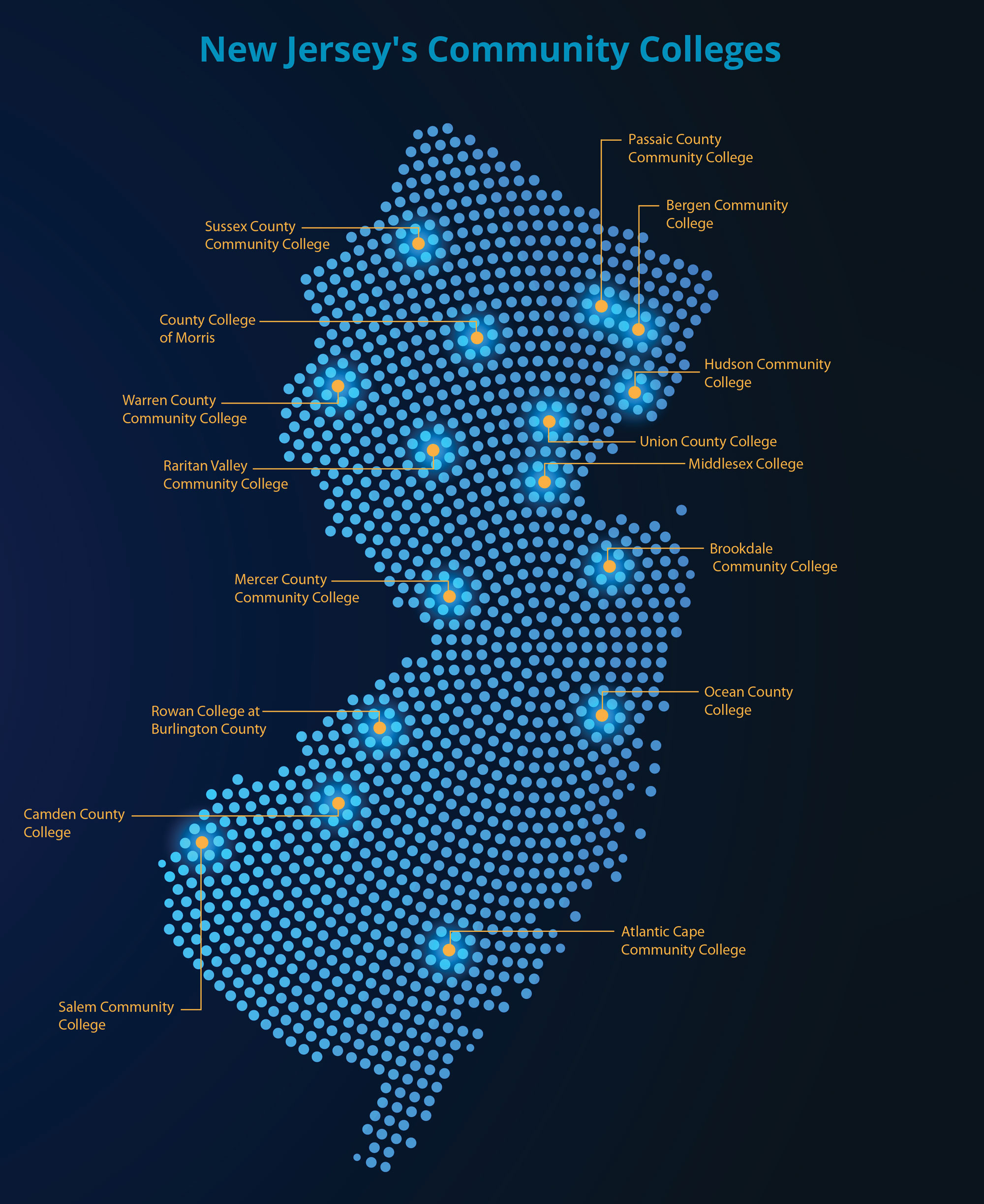Community colleges are instrumental in strengthening their local communities, providing valuable opportunities for students to access skills training, prepare for the workforce, and gain an entry point into higher education. Dedicated to helping maximize the reach and success of New Jersey’s community colleges, Edge was invited to speak to the Vice Presidents of Academic Affairs from several community colleges in the region. Josh Gaul, Chief Digital Learning Officer, Edge, shared insight into current educational technology and digital learning trends, microlearning and gamification, augmented reality and virtual reality (AV/VR), and building a more flexible learning environment for students. “Along with exploring digital learning trends, our overarching focus was to discuss how to create a connective tissue between all community colleges that supports each other’s academic missions,” explains Gaul. “You can only introduce these instructional and educational technology solutions if there is foundational learning theory to build upon. Before allocating any funds to the implementation of any new technology, we want to help institutions put a plan in place that outlines how these solutions will be used and how they can provide the most benefit to their students.”
Digital Learning Trends
As institutions of higher learning look to creatively blend in-person and online education and find ways to effectively reach more students, many are looking at current digital learning trends and how they can help boost engagement in students, while also expanding teaching opportunities. “In this digital age, attention spans have greatly decreased,” says Gaul. “Trends like microlearning deliver content in small, easily digestible sections where students can focus on better understanding and retaining the information. Adding gamification can also promote student engagement, help clarify information, and enhance overall comprehension of the material. Game-based learning provides a “paper trail” for students to review what they have learned and can incentivize completing each section with reward badges or other recognition or motivation. Many workforce development and competency-based learning models already use this method and this technology can be effectively incorporated into the higher education space.”
To provide a more diverse group of students with access to educational opportunities, assistive and adaptive technologies can help students with disabilities to be fully included in the classroom experience. “In both the physical and digital classroom, following the Universal Design for Learning (UDL) guidelines optimizes learning experiences for all students,” explains Gaul. “In addition, implementing the UDL framework allows each department within your institutions to ensure they are compliant with civil rights laws enforced by the Office for Civil Rights (OCR). Assistive technologies include video captioning, transcripts, alternative keyboards, and voice recognition software. To help institutions assess their courses for accessibility compliance, Edge provides Accessibility Compliance Support Services for Digital Learning and can provide a comprehensive or in-depth scan of an institution’s digital properties.”
Along with accessibility, mobility and flexibility are also important components of a digital learning strategy. “eLearning apps were the top downloaded category in 2021,” says Gaul. “In addition to being accessible to a greater spectrum of students, online learning must be able to be viewed through mobile devices. One of the greatest benefits of digital learning is expanding the opportunities for students to learn at their own pace and create a personal path to success. Edge understands how integrating high-quality digital and online learning is vital to the future of higher education and can help institutions evolve in an increasingly competitive marketplace.”
Among the most attention-grabbing trends is incorporating virtual reality elements to enhance course content. “AR/VR immerses learners in different realities and provides a low-risk simulated learning environment to gain new skills and expand their understanding,” explains Gaul. “In the education space, VR can allow avatars to connect with peers and instructors in virtual meeting rooms and AR is very effective in corporate training to share important information with employees. While these technologies can be very beneficial, they can also be expensive and building the business plan can be time-consuming. Instead of picking and choosing technologies based on the latest trends, a better approach is creating a strategy that incorporates an intentional use of technology that can evolve and grow with an institution and the needs of their students and staff. Edge can help an institution have these important conversations and determine what type of organization they’re striving to become and the steps required to reach this goal.”

“We have experienced instructional designers with Master’s degrees who can help with faculty and student development, conduct an evaluation of existing online courses against industry standards, and determine ways to update campus learning spaces with 21st century technology that will help improve the student learning experience.”
– Josh Gaul
Associate Vice President & Chief Digital Learning Officer
Edge

Creating a Path Forward
Following the discussion with the group of Vice Presidents of Academic Affairs, Edge has begun offering further guidance on their online learning programs and evaluating their preparedness through program readiness assessments. Given tight budgets, staffing changes, and the growing needs of today’s students, Edge is helping community colleges move their strategic priorities and goals forward through staffing support, faculty workshops, expert guidance, and finding ways to streamline processes to be more efficient. “We have experienced instructional designers with Master’s degrees who can help with faculty and student development, conduct an evaluation of existing online courses against industry standards, and determine ways to update campus learning spaces with 21st century technology that will help improve the student learning experience,” says Gaul. “We continue to expand our portfolio of resources and services based upon institutions’ growing needs and the evolving landscape of education.”
With the standard classroom a thing of the past, many institutions are already incorporating digital components into their daily instruction. To help organizations thrive in the future of higher education, Edge provides useful insight into creating impactful digital learning experiences, whether courses are fully online or will augment traditional, in-person learning. “Edge can collaborate with an institution on how to adopt innovative technologies in a strategic and budget-friendly way,” explains Gaul. “Specifically, we want to select the digital learning solutions that make the most sense for their academic mission and help eliminate redundancy across the organization. As a bridge between an institution and the technology vendors, Edge can navigate which options would help you advance forward, attract and retain more students, and provide an innovative, high-quality education across all departments.”
To learn how Edge can help accelerate digital learning at your institution, contact Michelle Ferraro at michelle.ferraro@njedge.net or Erin Brink at erin.brink@njedge.net.


